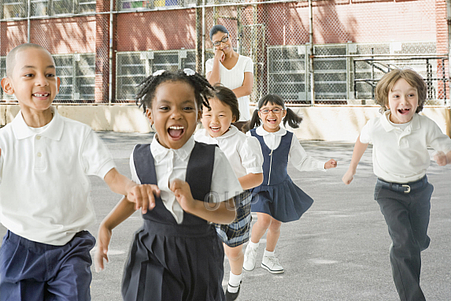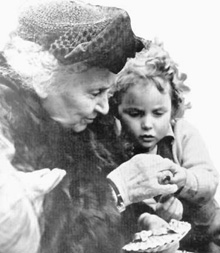 Ahead of his talk entitled ‘Linked language learning’ at IATEFL 2011 in Brighton, Patrick Jackson – co-author of the forthcoming Primary course, Everybody Up – tells us why children are naturally hard-wired for learning.
Ahead of his talk entitled ‘Linked language learning’ at IATEFL 2011 in Brighton, Patrick Jackson – co-author of the forthcoming Primary course, Everybody Up – tells us why children are naturally hard-wired for learning.
As part of a recent talk to teachers of young learners in Taiwan I asked participants to complete the following sentence: ‘Children are…’ The idea was to identify some natural characteristics of children which we might consider to bring out the best in students. My overall goal was to explore ideas around the topic of making teaching more real and relevant.
So, what would you have written had you been there? ‘Children are…’
In Taiwan the most popular answers were ‘energetic’, ‘curious’, ‘creative’, ‘friendly’ and ‘playful’. To be totally honest, there was also a smattering of ‘cute’, ‘lovely’, ‘naughty’ and ‘monsters’ but I think that’s the subject of another post.
So does this help us at all? Does the best language teaching take into account the nature of children? Do good lessons for young learners mirror these characteristics?
Good language teachers certainly harness children’s boundless energy by including plenty of movement and action through songs, TPR activities, games and role plays. They also build connections to the wider world and to school subjects, thereby satisfying children’s natural curiosity. Their lessons are full of surprise and wonder. It’s not just about English but ways to use English. Good teachers allow space for creativity, giving students plenty of chance to contribute in a personalised way. They build a community in and beyond the classroom that nurtures children’s friendly nature and they build a supportive environment for learning. This can be done through stories and a values program that models the thoughtful behaviour we seek. Finally, the best teachers allow for playfulness, both for the sake of fun but also because they understand that that’s the best way for children to learn about the world around them.
In nature, most things that are fun are fun for a very good reason.
When I looked again at these lists of adjectives something else struck me. The characteristics of children are also the characteristics of good language teachers. Think of some language teachers you really admire. Are they energetic? Curious? Creative and friendly? Playful? I thought so! And while we’re at it, wouldn’t the list be good advice for anyone who wants to be a successful language learner?
As with most things, we are best to look for our inspiration right in front of us and, as is usually the case, one’s best ideas are old news. Here are two quotes from educational pioneer Maria Montessori, written over 100 years ago.
- “The school must permit the free natural manifestations of the child.”
- “From the child itself the teacher will learn how to perfect himself as an educator.”

Not surprising really that there are so many Montessori schools called ‘Follow the Child’. It’s something we would all be well to remember.
This all brings us back to the fact that children are built to learn. For better or for worse, that’s how humans managed to dominate the planet. The best ‘methods’ take into account the simple fact that children already possess the right instincts to be wonderful learners. More than with any other age group the art of teaching young learners is to work in harmony with those instincts.


Excellent post, Patrick!
I totally agree with what you say – and I believe that that natural curiosity and desire that children have to find out about things is not taken seriously enough in most ELT materials for young learners. I wrote a bit about this recently over on Ken Wilson’s blog and don’t want to repeat myself, but to put it simply, I don’t think it is enough just to teach food vocabulary in itself, but that we should also be allowing the learners to learn about food (one example is the food pyramid, or healthy and unhealthy foods). This seems to be (slowly) improving in published materials, but I see many teachers who shy away from this natural desire to learn and just stick to teaching vocabulary.
If you are interested in hearing more about what I’ve been doing with my “little ones”, here is the link: https://bit.ly/dZ3tmG
I enjoyed your comparisons of children and teachers, too! One of the problems seems to be that although Primary teachers have these characteristics, many EFL teachers, who have to teach all age groups, don’t. But I guess that’s another story too.
Thanks 🙂
Patrick, enjoyed reading your post. Totally agree.
I also agree with Michelle about vocabulary teaching. Simply teaching isolated words will only short change their potential.
Teaching chunks and patterns is no harder than teaching isolated words. In my class, we extensively do chunks and patterns by playing, drawing and playing some more. Any vocabulary is presented in context of a situation where the children, if so disire, ask for an explanation, otherwise we go about playing and doing.
Mark in Gifu
[…] View the original article here Mouse here for Related LinksGoing with the Flow […]